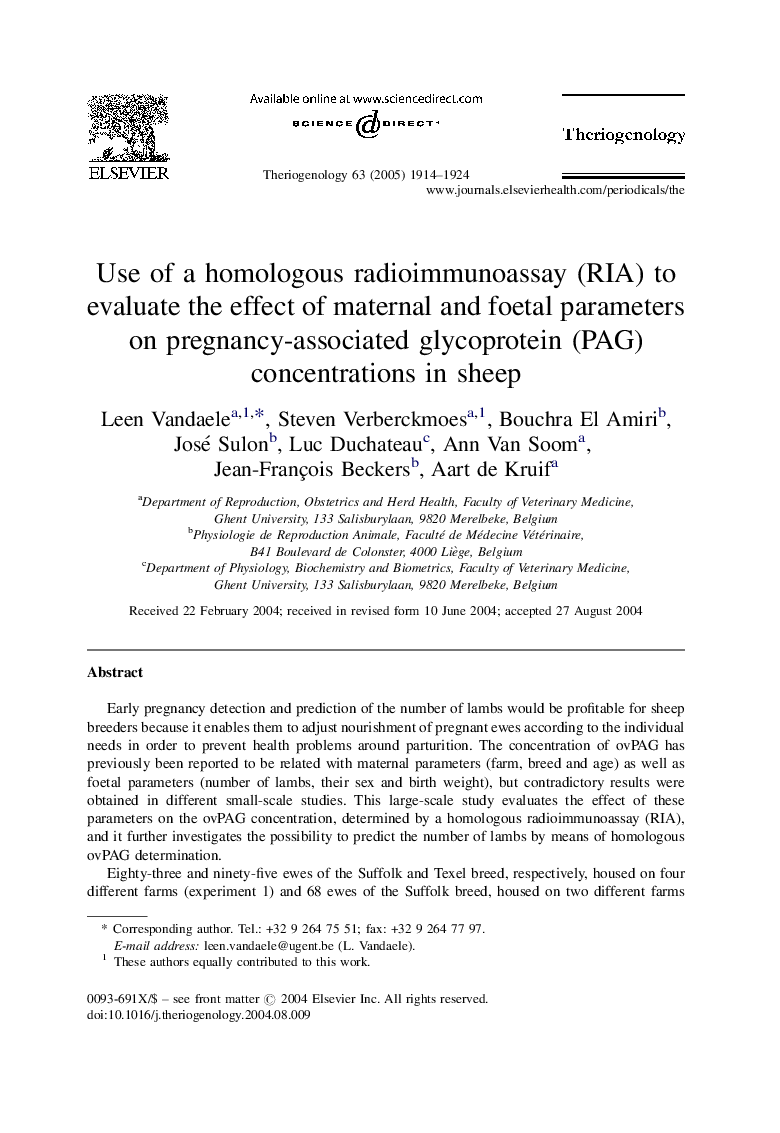| کد مقاله | کد نشریه | سال انتشار | مقاله انگلیسی | نسخه تمام متن |
|---|---|---|---|---|
| 2097502 | 1082250 | 2005 | 11 صفحه PDF | دانلود رایگان |

Early pregnancy detection and prediction of the number of lambs would be profitable for sheep breeders because it enables them to adjust nourishment of pregnant ewes according to the individual needs in order to prevent health problems around parturition. The concentration of ovPAG has previously been reported to be related with maternal parameters (farm, breed and age) as well as foetal parameters (number of lambs, their sex and birth weight), but contradictory results were obtained in different small-scale studies. This large-scale study evaluates the effect of these parameters on the ovPAG concentration, determined by a homologous radioimmunoassay (RIA), and it further investigates the possibility to predict the number of lambs by means of homologous ovPAG determination.Eighty-three and ninety-five ewes of the Suffolk and Texel breed, respectively, housed on four different farms (experiment 1) and 68 ewes of the Suffolk breed, housed on two different farms (experiment 2) were included in this study, and their estrous cycles were synchronised using a progesterone analogue. On the day of synchronisation (D-14) and at 25 (D25), 35 (D35) and 45 (D45) days after insemination, blood samples were taken and a homologous radioimmunoassay (RIA) was used to determine the ovPAG concentrations. At parturition, age of the ewe, number and sex of the lambs (experiment 1) and birth weight (experiment 2) were registered.OvPAG concentrations were not affected by age of the ewe and sex of the lambs. Farm and breed of the ewes, number and birth weight of the lambs had a significant effect on ovPAG concentrations at all time points (P < 0.05). The odds of multiple lambs increased significantly with increasing ovPAG concentration, although prediction of litter size based on ovPAG concentration at the individual ewe level was not useful due to small sensitivity and/or specificity whatever the cutoff value used.In conclusion, the ovPAG concentration is affected by farm and breed of the ewes, and number and birth weight of the lambs.
Journal: Theriogenology - Volume 63, Issue 7, 15 April 2005, Pages 1914–1924